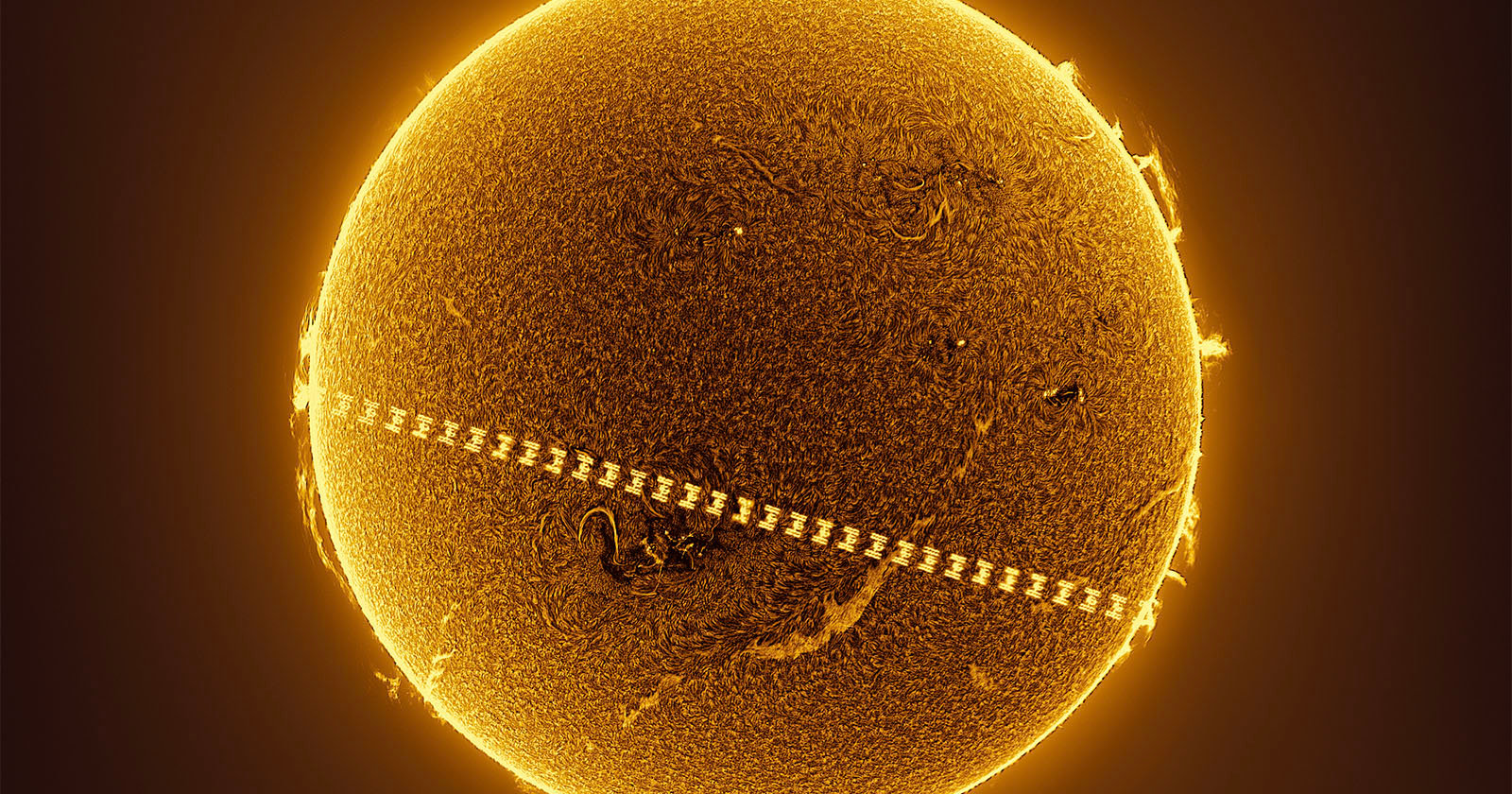
Astrophotographer Miguel Claro captured this magnificent image of the International Space Station (ISS) transiting the surface of the Sun in the blink of an eye. Claro captured the stupendous image from Figueira da Foz on the northern coast of Portugal on June 2. Employing a fast video camera capable of recording 109 images per second, he captured multiple images of the ISS as it hurtled through space at 4.5 miles per second (7.31 kilometers per second) at a distance of roughly 274 miles (441.5 kilometers) from Earth. Writing for Space.com, Claro explains that the images of the ISS were processed individually without being stacked. “I was impressed with the quality achieved only with single frames,” he says.
The Sun’s chromosphere is visible in H-alpha emission making the ISS appear white because Claro uses an “inversion technique” to process the Sun’s chromosphere. A video shows the ISS in black before the chromosphere is enhanced. “It’s interesting that it’s possible to recognize the distinct structures of the ISS in the photo,” Claro writes for Space. Indeed, the spacecraft’s solar panels and modules can be made out as well as huge jets of gas emanating from the Sun’s outer atmosphere and a large sunspot, which is an active region on the surface of Earth’s nearest star. ISS Zippering the Sun by Miguel Claro Claro had just 0.54 seconds of transit time in which the ISS was visible. To meet this challenge, the Portuguese astrophotographer used the Apollo-M Max which is made by Player One Astronomy. The camera records 109 images per second in 16-bit. In total, the video is about two seconds long in which 200 images were captured. “The ISS completes an entire orbit around Earth every 90 minutes,” Claro explains. “Carrying on board astronauts, the large artificial satellite that orbits our planet has a width of 356 feet (108.5 meters).
“While fairly large in the sky with an angular diameter of 62.58″, the ISS seems very small when compared with the massive size of the solar disc, which has an angular size of 31.6′. That makes the Sun appear some 30.3 times larger than the ISS at the moment of this photo.” You can buy a limited edition print of Miguel Claro’s ISS Zippering the Sun from his Shopify page. For more of Claro’s work, head to his Facebook and Instagram. Image credits: All photos by Miguel Claro.






